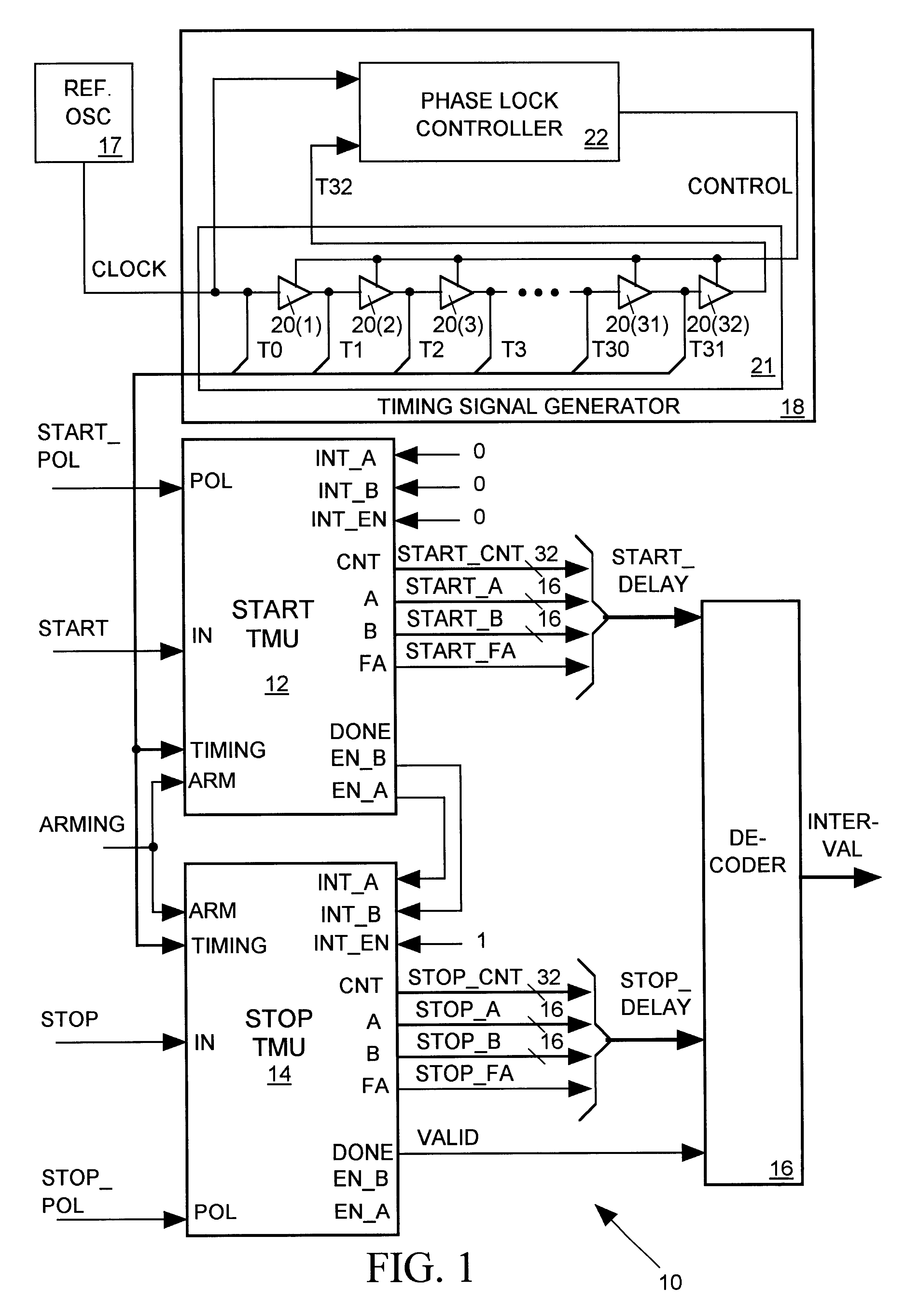Apparatus for measuring intervals between signal edges
a technology of signal edges and apparatus, which is applied in the direction of instruments, generating/distributing signals, horology, etc., can solve the problems of difficult to accurately predict the gate speed, the speed of the gate is difficult to accurately predict, and the accuracy of the system described above for measuring the time interval between the start and stop signal edges is adversely affected
- Summary
- Abstract
- Description
- Claims
- Application Information
AI Technical Summary
Problems solved by technology
Method used
Image
Examples
Embodiment Construction
FIG. 1 illustrates a time interval measurement apparatus 10 in accordance with the invention for generating output data (INTERVAL) indicating a time interval between two signal pulse edges (START and STOP). Apparatus 10 includes a start TMU 12 for measuring a delay between a leading edge of a reference signal (ARMING) and the START signal edge and for producing output data (START_DELAY) representing that delay. Similarly a stop TMU 14 measures the delay between the ARMING signal edge and the STOP signal edge and generates output data (STOP_DELAY) representing that delay. As discussed below, start and stop TMUs 12 and 14 both undervalue the delays they measure, but they do so by the same amount. Thus when we subtract the START signal delay reported by the START_DELAY data from the STOP signal delay reported by the STOP_DELAY data, we find that the errors cancel one another and that the result accurately reflects the interval between the START and STOP signal edges. Apparatus 10 inclu...
PUM
 Login to View More
Login to View More Abstract
Description
Claims
Application Information
 Login to View More
Login to View More - R&D
- Intellectual Property
- Life Sciences
- Materials
- Tech Scout
- Unparalleled Data Quality
- Higher Quality Content
- 60% Fewer Hallucinations
Browse by: Latest US Patents, China's latest patents, Technical Efficacy Thesaurus, Application Domain, Technology Topic, Popular Technical Reports.
© 2025 PatSnap. All rights reserved.Legal|Privacy policy|Modern Slavery Act Transparency Statement|Sitemap|About US| Contact US: help@patsnap.com



